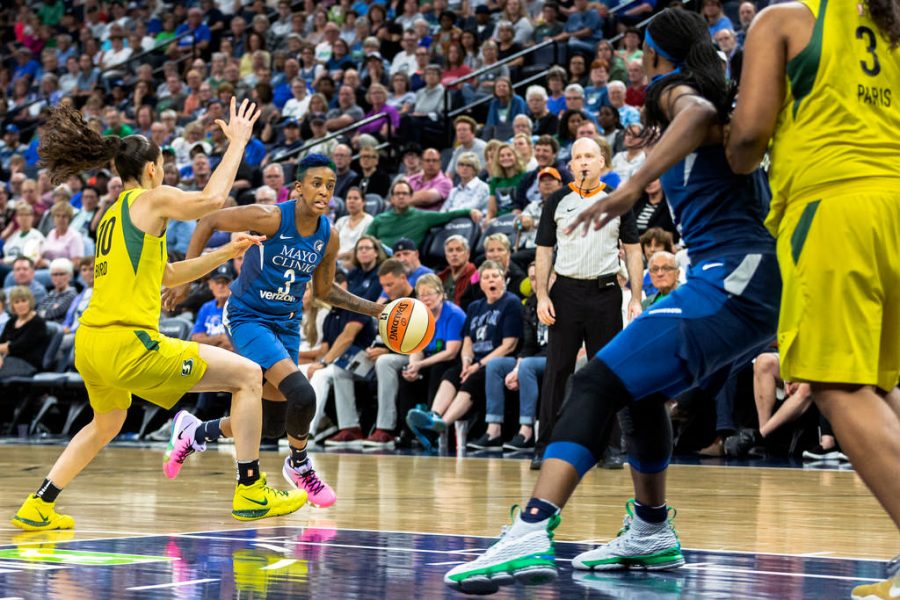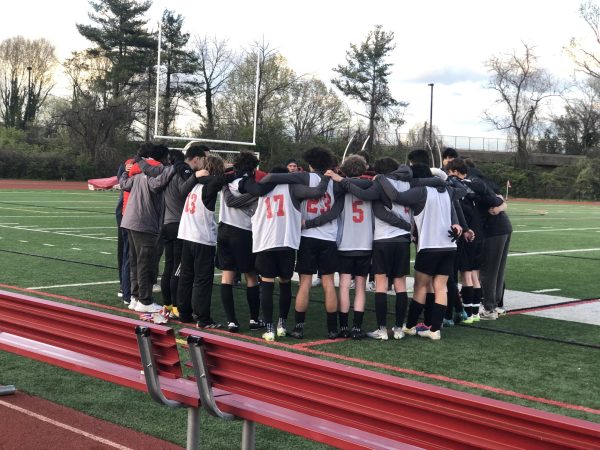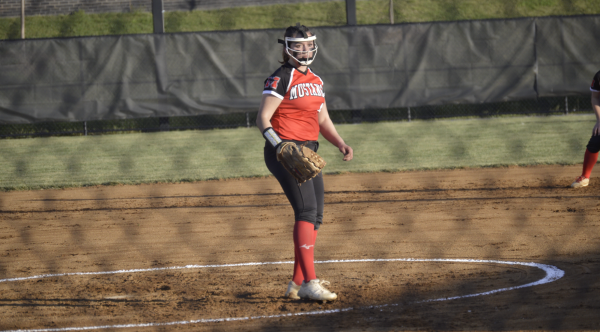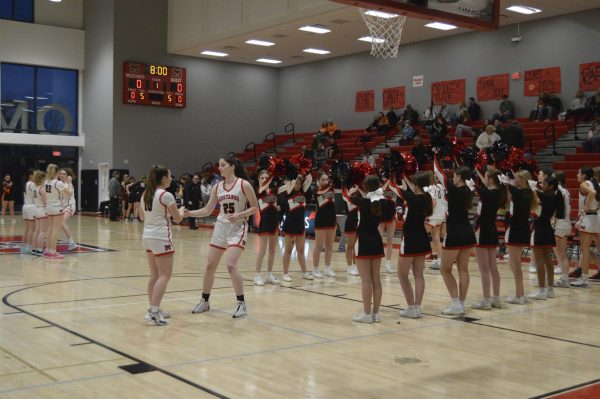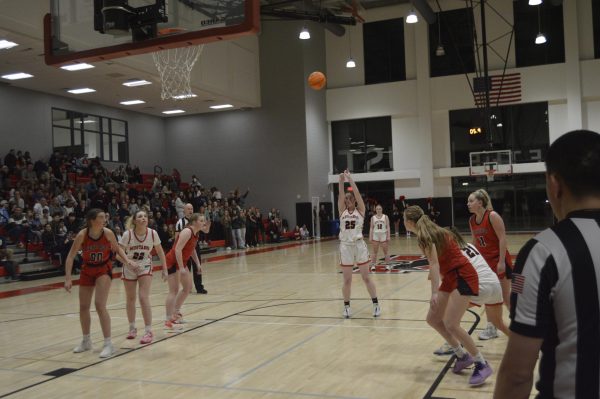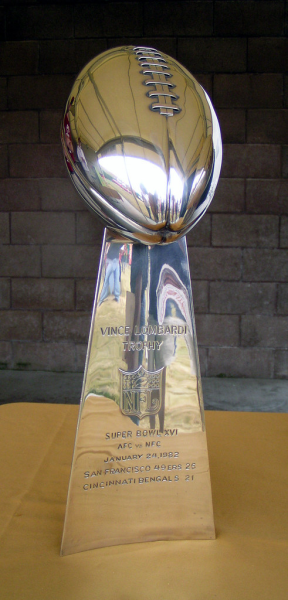Women’s basketball needs to be as big as men’s
Danielle Robinson of the Minnesota Lynx dribbles past Sue Bird of the Seattle Storm, driving towards the hoop. Most of the WNBA play overseas in the offseason, and Robinson and Bird are no exception. (Photo by Lorie Shaull via Flickr)
October 24, 2018
Women’s sports have always played second fiddle to their male counterparts. This is especially true for the Women’s National Basketball Association (WNBA) and the National Basketball Association (NBA), the parent organization of the WNBA. The women work just as hard as the men, sometimes playing in another league during the offseason, for substantially less pay and publicity. It’s time for that to change.
The commissioner of the NBA, Adam Silver, appeared on ESPN’s “Get Up!” and claimed that the WNBA itself has a “marketing problem” and does a bad job at selling tickets, creating commercials, and other advertising tactics necessary to run a successful league. Washington Mystics star and 2015 WNBA MVP Elena Delle Donne disagrees.
Following Silver’s statements and many other recent events, many WNBA players took to Twitter to voice their disapproval.
. @MichelleDBeadle thank you for asking the question and getting this conversation started. #seeher pic.twitter.com/G97q7foIEk
— Elena Delle Donne (@De11eDonne) April 21, 2018
today I learnt NBA refs make more than a WNBA player and the 12th man on a NBA team makes more than a WHOLE WNBA team 🙃🙃🙃
— Elizabeth Cambage (@ecambage) June 19, 2018
154M ……….. must. be. nice. We over here looking for a M 🙃 but Lord, let me get back in my lane pic.twitter.com/IFDZLlI53z
— A'ja Wilson (@_ajawilson22) July 2, 2018
The “154M” that Wilson talked about was in reference of the four years, one-hundred fifty-four million dollar mega-contract that LeBron James signed with the Los Angeles Lakers this past summer.
The highest paid player in the WNBA, Sylvia Fowles, made $109,000 in the 2018 season, while the highest paid player in the NBA, Stephen Curry, made $34.7 million in the corresponding season. Fowles’s salary would equal the second-lowest salary in the NBA. In other words, there is only one player (Emeka Okafor of the New Orleans Pelicans) in the NBA that makes less than the highest paid player in the WNBA.
The pay difference isn’t the only injustice that these women have to suffer through. According to The Comeback, WNBA players fly coach and pay their own baggage fees as opposed to NBA players who fly charter. This summer, after the Las Vegas Aces spent 25 hours flying commercial from Vegas in order to get to Washington, D.C., the team was charged with a forfeit when they opted not to play because they hadn’t slept in a bed in two days. This would never happen in the NBA, as their union prevents the league from forcing its players to play in a game if their team traveled two time zones that day.
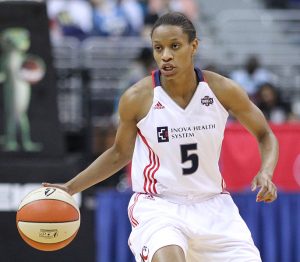
Some players in the WNBA have to play overseas in Russia, Turkey, Italy, Korea, and other countries in Europe, Asia, and Africa during the offseason just to earn more money. This isn’t just the players who aren’t sure if they’ll have a team to play on the next season. Sixty-three players, representing twelve teams play overseas during the offseason. Diana Taurasi made $1.5 million for her team in Russia. If WNBA players are able to make millions of dollars overseas, they may as well only play abroad and skip the WNBA season. Players skipping the WNBA season, for obvious reasons, is a serious danger to the league.
It is true that the NBA makes $475,000,000 more than the WNBA in a season. It is also true that the NBA has a nine-year, $24 billion TV deal with ESPN and Turner Sports as opposed to the occasional WNBA game that may appear on ESPN2 every once in a while. But the problem is also that people need to take the WNBA more seriously, as it is a legitimate league with competitive play.
The Women’s National Basketball Association is becoming more fragile. The NBA, as a parent organization of the WNBA, needs to pay the women as much, if not more, than the men. If they do not, then women’s basketball could move entirely overseas and the WNBA could be eliminated.


